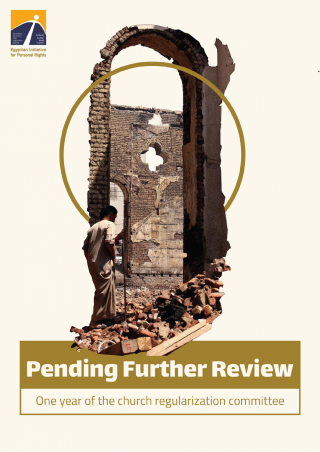Files: Coptic Church
February 26, 2022, the Administrative Court of the First Circuit (Liberties) held the first hearing of Case No.
Therefore, the Stop the Death Penalty Campaign in Egypt and the undersigned organizations call upon the Egyptian government to immediately halt the implementation of the death penalty and to abide by the Egyptian Code of Criminal Procedure by informing the families of those sentenced to death of the execution deadline and allowing them to visit the convicted person in accordance with what is stipulated in Egyptian law.
The Egyptian Initiative for Personal Rights said that three years after its adoption, the church construction law has failed to end violations of Christians’ right to worship and address related sectarian tensions. It criticized the security apparatus for shutting down church buildings and thereby prohibiting many Copts in Egyptian villages from engaging in collective worship.
We stress on that the source of this serious issue is the absence of a legislation that activates the constitutional article, without disruption to the rest of the constitutional articles that prohibit discrimination on the basis of sex and guarantee freedom of belief for all without discrimination, as well as the vagueness of the current legal system which opens the door to a such serious violation.
EIPR condemns closure of the Naga al-Ghafir church in Sohag by security and documents closure of 22 churches since enactment of the church construction law; demands reopening of closed churches and a decree regularizing the status of all churches that filed papers with the regularization committee
The EIPR believes that such a decree would most faithfully enact the provisions of the church construction law, however flawed, as well as treat the causes of sectarian violence, which is largely rooted in bureaucratic obstruction and clear recalcitrance on the part of the security apparatus.
The report covers the period from September 28, 2017, the end of the deadline for the submission of applications for legal status, to the end of October 2018. Reviewing the two decrees issued by the committee and offering a documentary narrative of the sectarian attacks and security violations connected to Christian citizens worshipping in existing churches that submitted the necessary papers to the legalization committee.
What happened in Dimshaw Hashim is not a unique case, but a recurrent pattern in a number of governorates that has been going on recently, manifested in closing a number of existing churches and them being unable to settle their legal status.




